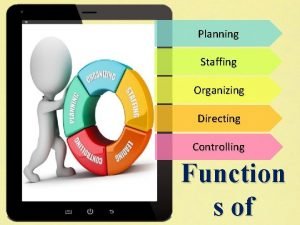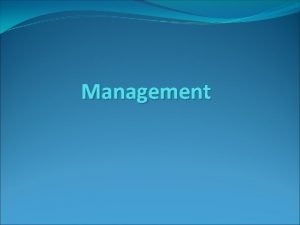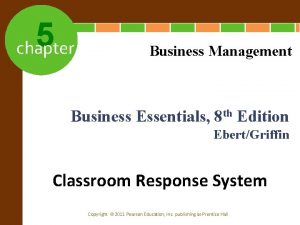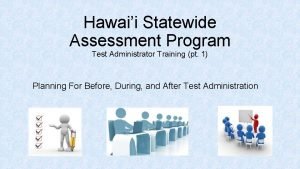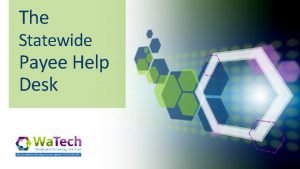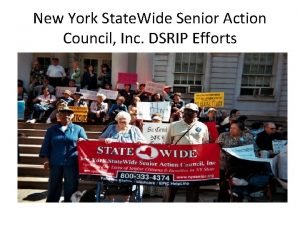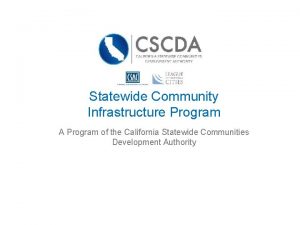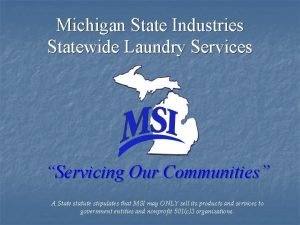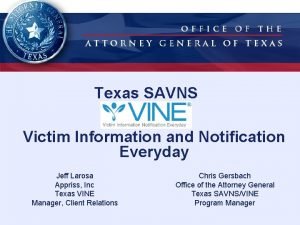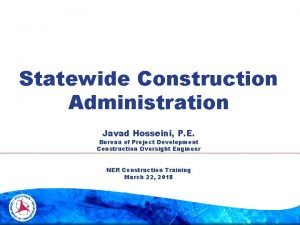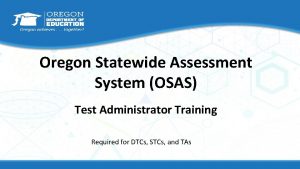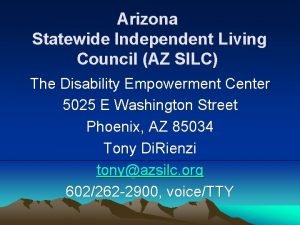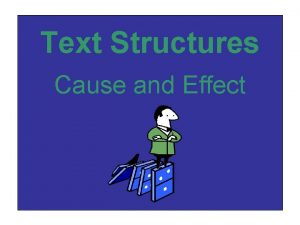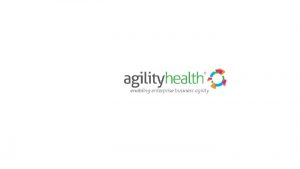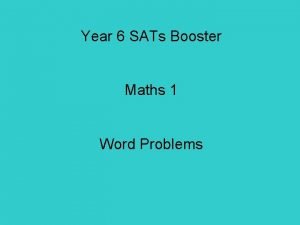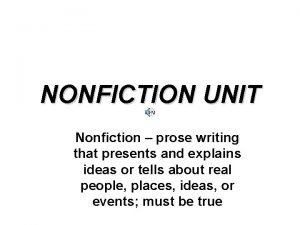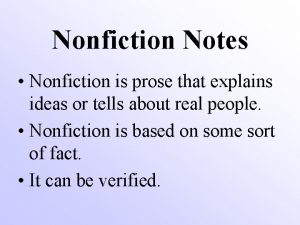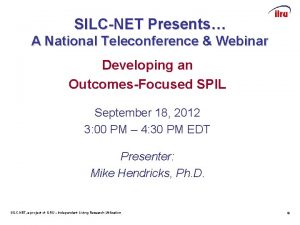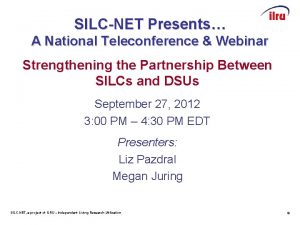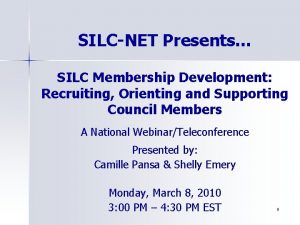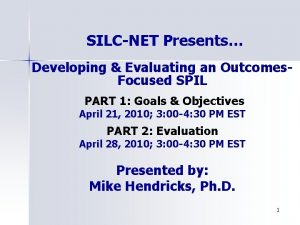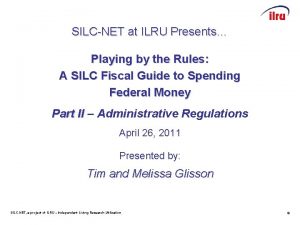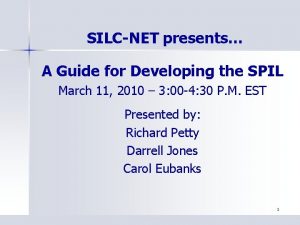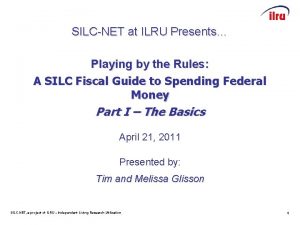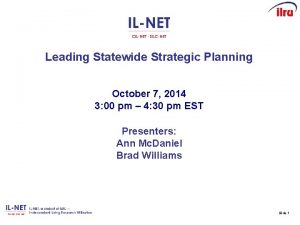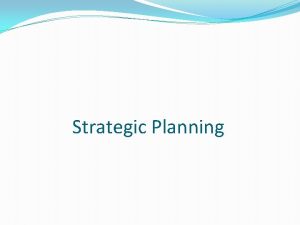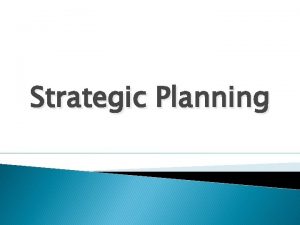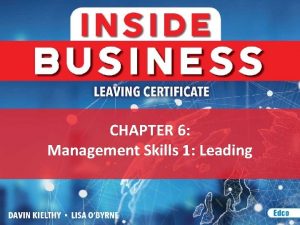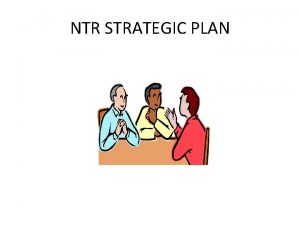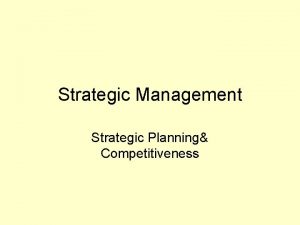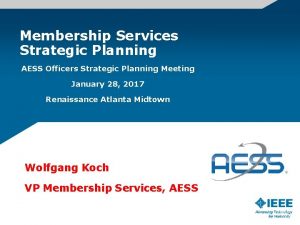SILCNET Presents Leading Statewide Strategic Planning A National

































- Slides: 33

SILC-NET Presents… Leading Statewide Strategic Planning A National Webinar/Teleconference Presented by: Brad Williams and Ann Mc. Daniel Thursday, February 4, 2010 3: 00 PM – 4: 30 PM EST 0

Introduction and Objectives n n Differentiate between a SILC strategic planning process and SPIL development Describe effective strategic planning that supports inclusion in all processes and full accessibility of meetings and materials Describe effective processes for collecting and synthesizing input and setting priorities Describe strategies that will engage, support, and follow up with stakeholders to ensure successful implementation of the strategic plan

Have you ever had these situations…? n n n n Difficulty recruiting new members Problems meeting quorum Delays or setbacks with negotiating budgets/contracts Difficulty with cash flow Lack of organizational goals outside of SPIL Inability to respond to crisis situations Need to layoff/downsize staff

YOU NEED TO BE PROACTIVE! n n n These problems are occurring because you are reacting to situations. While the SPIL is your primary responsibility, you ALSO have organizational needs! SOLUTION: You need to define your organizational needs using Strategic Planning Methods. 3

SILC Strategic Planning – 2 Aspects n n SPIL Development SILC Strategic Plan Development

Isn’t the SPIL a Strategic Plan? n n Yes, but the SPIL is a plan for IL in your state – not for the SILC. It works toward building the IL Network. A SILC Strategic Plan is specifically to: – Achieve the SILC mission – Support the growth & development of the SILC as an organization – Direct the work of the SILC outside the SILC’s SPIL responsibilities

SPIL as a Strategic Plan n Assesses needs of people with disabilities & gathers input (analysis) Includes goals and objectives & how funds will be used to address needs Includes input & feedback from others But – the SPIL is time limited (3 years) & is a plan for the state, not the SILC

Why Strategic Planning in Addition to the SPIL Process? n n n SPIL addresses statewide IL needs, which may include SILC, but not in a comprehensive way Even though there is a SILC resource plan in the SPIL, it usually addresses basic operation Strategic planning will: – help to identify organizational development and longer-range needs of the SILC. – prioritize key issues not discussed during SPIL development process and allow for other logistical planning related to committees, resources, etc. 7

Make a Plan for Planning n n n Decide who to involve in planning Identify stakeholders to gather input from Decide methods for gathering input Decide on planning process Find a time and a place for the strategic planning to occur without interruptions

What Kind of Plan is Needed? n Plan may vary depending on SILC structure: – Non-profit corporation – Informal organization supported by DSU – Other? n Mission and Vision affect detail and time frame for the plan – What you want to accomplish will impact how long it will take and the detail of the planning

Is a Facilitator Necessary? n An outside facilitator is strongly recommended: – To provide expertise in directing the strategic planning process – To allow all SILC members, staff & stakeholders to participate fully – To provide impartial direction through the process & to mediate stressful discussions

Resolving Disputes n n Identify areas of agreement Identify common goals Allow for negotiation and give & take on how to accomplish goals Have a facilitator to mediate the discussion and reach resolution

Questions & Answers Got questions?

SILC Organizational Snap Shot Assessment Tool n n WNYIL (Buffalo, NY-formerly RRTC in IL Management) created Organizational Snap Shot for SILCs Collects important organizational information about SILCs as well as compliance data Helps to expose areas that need addressing (strengths and weaknesses), what could be referred to a committee for work, and need for potential resources Identifies key information going into a strategic planning process 13

SILC Organizational Snap Shot Assessment Tool (Continued) n n “Snap shot” takes picture of how SILC exists today This strategic planning tool is divided into 9 management categories: – Organizational Culture, Administrative Management, Physical Plant Management, Governance/Board, Financial Management, Human Resource Management, Program and Services, Community Relations, & Sample SILC Budget. n Overall, it allows you to examine how the SILC is doing in each of these areas 14

SILC Organizational Snap Shot Assessment Tool (Continued) n Process: – Begin at least 2 months prior to meeting with facilitator – Share results of completed snap shot with full council in advance of meeting – Allow people to review the information to identify gaps, potential goals, etc. n Not all members equal (i. e. , time/experience, etc. ) – Apply a timeline (5 years) to be able to address issues, view progress, and provide for turnover of council – Compare current snap shot to new one in 5 years 15

Need for External Input n n External information should also be gathered about the SILC External perceptions and realities: – May mirror internal perceptions & realities – More likely will give you a better understanding of the differences – how your organization is viewed by partners, the public, & other stakeholders

Formats for Gathering Input n n n Public Forums Needs Assessments Stakeholder Surveys Facilitated work meetings with stakeholders Town Hall meetings Focus Groups

Questions & Answers Got questions? 18

New York SILC Experience n n Conduct SILC Snap Shot and share findings. Conduct strategic planning session and share materials in advance. – Peter Drucker Self Assessment Tool exercises – Albert Humphrey SWOT Analysis 19

Exercise #1: Drucker Worksheet 5 n Identify your primary customer – This is an important task for any business. You need it to express clear mission and vision statements. – A consumer is a CIL’s primary customer, but just who IS a SILC’s primary customer? n Identify your supporting customers – It may include volunteers, members, partners, funders, and other stakeholders 20

Exercise #2: Humphrey SWOT Analysis n n SWOT stands for strengths, weaknesses, opportunities, and threats. The assessment provides a quick overview of organizational dynamics. Helps to identify strengths and opportunities from which to build, identify weaknesses and potential threats, and determine if the threats identified are real and controllable, or uncontrollable. Issues and goals usually come from strengths to build on, weaknesses to be strengthened, opportunities to be taken, and threats to be avoided. 21

Exercise #2: Humphrey SWOT Analysis n n Looked at in relation to organization’s life cycle. As organizations change and grow from start-up phase, to growth phase, through governance phase, and onto institutional phase, they develop certain characteristics which can be both positive and negative, and require different management and leadership abilities. Based on information identified in SILC Organizational Snap Shot, and personal experience related to the council, the group is encouraged to generate a list of up to 5 -10 items per area. 22

Exercise #2: (Continued) Humphrey SWOT Analysis n Strengths n – Committee structure/functional – Conduct good studies/surveys/reports n Weaknesses – Lack of resources – IT infrastructure outdated Opportunities – Maximize use of website – Access ARRA funds to replace outdated IT n Threats – Lack of funding diversity – Lack of visibility/disability community – State budget cuts 23

Exercise # 3: Drucker Worksheet 1 n n What is the current mission statement? Does the mission statement need to be replaced? New mission statement: Mission guidelines: – Purpose of the organization (how do we do what we do). 24

Exercise # 4: Drucker Worksheet 1 A n n What is the current vision statement? Does the vision statement need to be replaced? New vision statement: Vision statement elements: – Compelling, inspires commitment and action, has future pull, makes the world a better place. 25

Exercise # 5: Drucker Worksheet 15 n Top 5 Priority Goals – Establish Recruitment Committee to recommend new members to fill vacancies on council. n Person with technology background n Person with fund development background – Develop new member orientation manual to train and support recent appointees 26

Exercise # 5: Drucker Worksheet 15, contd. n n Based on SWOT analysis, SILC snap shot, observations, consistent with mission and vision After identifying top 5 priority goals: – Assign responsibility to appropriate council committee – Identify potential resources (if appropriate) 27

Outcomes of Strategic Planning n n n Clear picture of your organization from the inside and outside Clarified Mission & Vision Identified organizational needs Clear goals to work toward Clear strategies to get there A stronger, more productive SILC! 28

Resources n n n Free SWOT Analysis Template http: //www. businessballs. com/swotanalysisfreetemplat e. htm The Drucker Foundation Self-Assessment Tool, Copyright © 1999 The Peter F. Drucker Foundation for Nonprofit Management, 320 Park Avenue, 3 rd Floor, New York, NY 10022. http: //www. pfdf. org Organizational Snap Shot for Statewide Independent Living Councils (SILCs), © 2005 Western New York Independent Living, Buffalo, NY (formerly the RRTC in IL Management). www. wnyilp. org/RRTCILM/snapshots/SILCSnap. Shot 0105. doc

Questions & Answers Got questions? 30

Wrap Up and Evaluation n Click the link below now to complete an evaluation of today’s program found at: https: //vovici. com/wsb. dll/s/12291 g 42 b 76

SILC-NET Support for development of this Webinar/teleconference was provided by the U. S. Department of Education, Rehabilitation Services Administration under grant number H 132 B 070003 -09. No official endorsement of the Department of Education should be inferred. Permission is granted for duplication of any portion of this Power. Point presentation, providing that the following credit is given to the SILC-NET project: Presented as part of the SILC-NET, a program of the IL NET, an ILRU/NCIL/APRIL National Training and Technical Assistance Project.
 Bobbin leading and flyer leading
Bobbin leading and flyer leading Strategic planning vs tactical planning
Strategic planning vs tactical planning Planning staffing organizing leading and controlling
Planning staffing organizing leading and controlling Planning directing controlling
Planning directing controlling Human skills meaning
Human skills meaning Planning organizing leading and controlling
Planning organizing leading and controlling Starbucks planning organizing leading and controlling
Starbucks planning organizing leading and controlling Hawaii statewide assessment program
Hawaii statewide assessment program Nova payee services
Nova payee services Statewide health insurance benefits advisors
Statewide health insurance benefits advisors New york statewide senior action council
New york statewide senior action council Statewide community infrastructure program
Statewide community infrastructure program Michigan state industries
Michigan state industries Savns
Savns Statewide construction and development
Statewide construction and development Statewide benefits
Statewide benefits Oregon test portal
Oregon test portal Vinelink texas statewide
Vinelink texas statewide Arizona statewide independent living council
Arizona statewide independent living council Strategic fit vs strategic intent
Strategic fit vs strategic intent Tirole
Tirole Io model strategic management
Io model strategic management Analysing the 6 strategic options megxit
Analysing the 6 strategic options megxit Presents cause and effect relationships
Presents cause and effect relationships Presents from my aunt in pakistan
Presents from my aunt in pakistan Pear paragraph structure
Pear paragraph structure Sally elatta presents on business agility
Sally elatta presents on business agility 16 3 darwin presents his case answer key
16 3 darwin presents his case answer key Section 15-3 darwin presents his case answer key
Section 15-3 darwin presents his case answer key Sats word problems
Sats word problems A text that presents both side of the topic
A text that presents both side of the topic Zids and zods answers
Zids and zods answers Prose writing that presents and explains ideas
Prose writing that presents and explains ideas What is nonfiction prose
What is nonfiction prose



